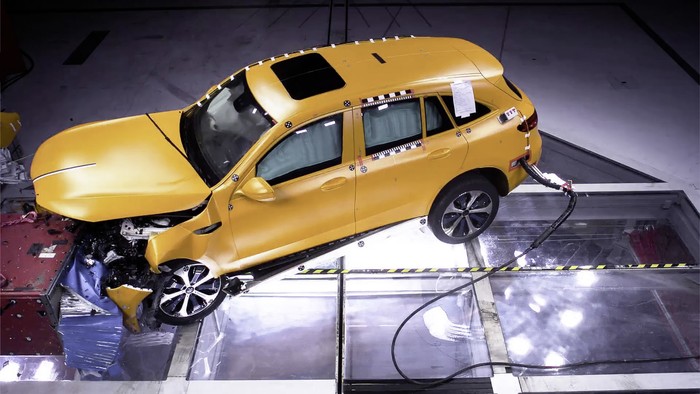
Mercedes-Benz highlights EQC crash tests
The company has studied battery behavior under impact, when penetrated by foreign bodies and if overheated or overloaded.
Mercedes-Benz has shed light on internal crash test validations for the EQC, highlighting the unique safety aspects of an all-electric platform architecture.
Like Tesla's lineup, the EQC integrates a battery module below the cabin floor and minimal components under the hood where an internal combustion engine typically presents particular challenges to crash impact absorption.
Daimler engineers surrounded the battery by a strong frame with an integral crash structure, with deformation elements installed between the frame and battery to help absorb forces of severe side impacts. A battery guard in the front helps prevent the module from being pierced by road debris.
To protect occupants and first responders from electrocution, the high-voltage system can be automatically cut in a crash. Depending on severity, the shutoff can be reversible or irreversible.
Special attention was paid to the battery, requiring unique tests to determine how the components behave when crushed or penetrated by foreign bodies. Other tests focused on overheating and overloading.
Mercedes-Benz is among several automakers to follow Tesla's lead with a 'skateboard' platform architecture. The low center of gravity and front-end deformation structures have helped Tesla vehicles ace crash tests. Such characteristics will likely become common across other all-electric vehicles built upon dedicated EV platform architectures.